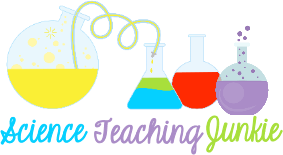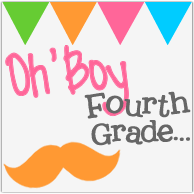I've always been a huge fan of using stations around the classroom. It gets the students up and moving and is far more interesting than the typical sit-and-get instruction. Even if it involves a reading passage at one station, answering questions, and an activity at another, the students prefer it because they are changing what they are doing every 5-10 minutes. Those ADD tendencies and teenage boredom barely have a chance to set in before they've moved onto another thing.
And the best perk for us science teachers, is that we can become more of a facilitator/coach and our students can take greater ownership in their learning. If we truly want our students to become more independent, they must learn to use what they know. Without having the chance to have these meaningful conversations that support their thinking with each other, our students will fall short.
This type of activity also frees the teacher up to check on the students that typically struggle more than others. You could also incorporate a station into the mix where students come to you and you do some more targeted interventions.
One great way to easily incorporate this into your classroom is with the use of task cards. They are basically cards with questions, activities or short passages that students read and then record some sort of answer onto their answer sheet. They can be used in stations, hidden around the room or the school campus (like a scavenger hunt), in small groups or with individuals. If you want to read up on various ways to use them, check out Rachel Lynette's Task Card site.
I just added a new task card set to my Teacher's Pay Teachers store, titled "Atoms and the Periodic Table." Click HERE to check it out.
Here's a preview of the new product!



And the best perk for us science teachers, is that we can become more of a facilitator/coach and our students can take greater ownership in their learning. If we truly want our students to become more independent, they must learn to use what they know. Without having the chance to have these meaningful conversations that support their thinking with each other, our students will fall short.
This type of activity also frees the teacher up to check on the students that typically struggle more than others. You could also incorporate a station into the mix where students come to you and you do some more targeted interventions.
One great way to easily incorporate this into your classroom is with the use of task cards. They are basically cards with questions, activities or short passages that students read and then record some sort of answer onto their answer sheet. They can be used in stations, hidden around the room or the school campus (like a scavenger hunt), in small groups or with individuals. If you want to read up on various ways to use them, check out Rachel Lynette's Task Card site.
I just added a new task card set to my Teacher's Pay Teachers store, titled "Atoms and the Periodic Table." Click HERE to check it out.
Here's a preview of the new product!












